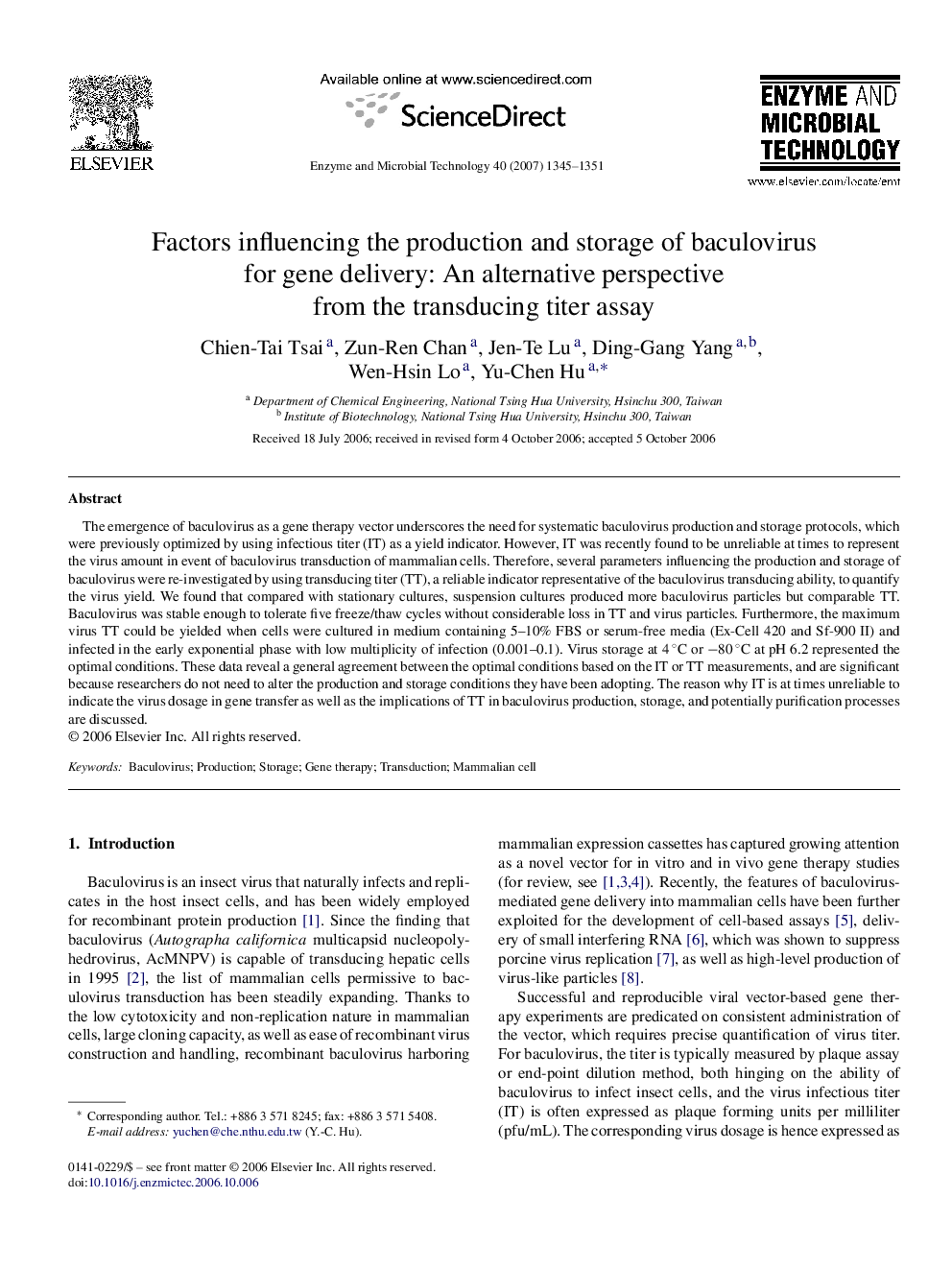| Article ID | Journal | Published Year | Pages | File Type |
|---|---|---|---|---|
| 18184 | Enzyme and Microbial Technology | 2007 | 7 Pages |
The emergence of baculovirus as a gene therapy vector underscores the need for systematic baculovirus production and storage protocols, which were previously optimized by using infectious titer (IT) as a yield indicator. However, IT was recently found to be unreliable at times to represent the virus amount in event of baculovirus transduction of mammalian cells. Therefore, several parameters influencing the production and storage of baculovirus were re-investigated by using transducing titer (TT), a reliable indicator representative of the baculovirus transducing ability, to quantify the virus yield. We found that compared with stationary cultures, suspension cultures produced more baculovirus particles but comparable TT. Baculovirus was stable enough to tolerate five freeze/thaw cycles without considerable loss in TT and virus particles. Furthermore, the maximum virus TT could be yielded when cells were cultured in medium containing 5–10% FBS or serum-free media (Ex-Cell 420 and Sf-900 II) and infected in the early exponential phase with low multiplicity of infection (0.001–0.1). Virus storage at 4 °C or −80 °C at pH 6.2 represented the optimal conditions. These data reveal a general agreement between the optimal conditions based on the IT or TT measurements, and are significant because researchers do not need to alter the production and storage conditions they have been adopting. The reason why IT is at times unreliable to indicate the virus dosage in gene transfer as well as the implications of TT in baculovirus production, storage, and potentially purification processes are discussed.
